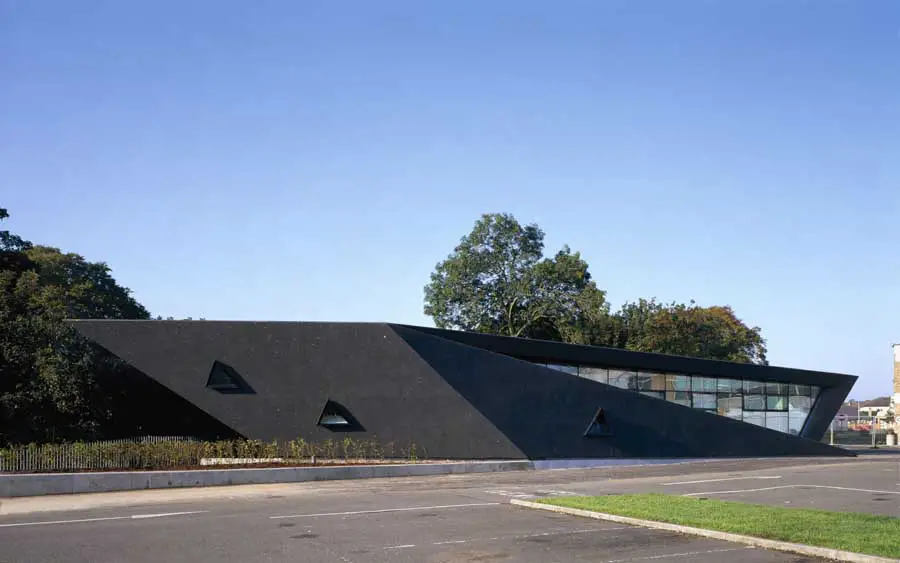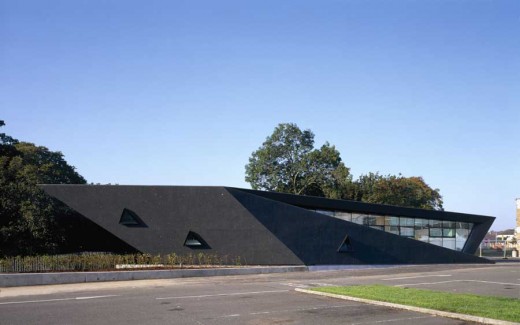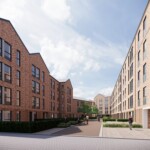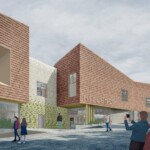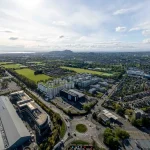Zaha Hadid Kirkcaldy images, Modern Fife building photos, ZHA architect interior, Scottish architectural design
Zaha Hadid Architects : Architecture
Maggie’s Centre Kirkcaldy, Fife, Scotland, UK
updated 31 Mar 2016
Design: Zaha Hadid Architects (ZHA)
Maggies Centre Fife
Maggies Centre Fife – photos + article re this Kirkcaldy building
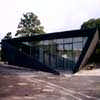
Maggies Centre Fife : picture © Adrian Welch
The Maggie’s Fife Kirkcaldy was a Scottish Design Awards 2007 Public Building Shortlist
Zaha Hadid Architects, London +44 (0)20 7253 5147
Images of this Zaha Hadid building on site, taken 29 Jan 2006
Zaha Hadid – Background
Zaha was born in Baghdad, Iraq, 1950
Mathematics degree at the American University, Beirut, 1971
Architecture degree at Architectural Association in London, 1972
Partner at OMA – the Office of Metropolitan Architecture – with founders Rem Koolhaas and Elia Zenghelis
Architecture tutor at Architectural Association in London
Zaha Hadid Architects established in London, 1979
Zaha Hadid Scotland : Maggie’s Fife
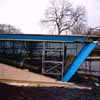
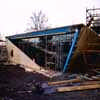
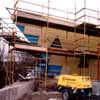
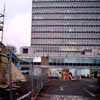
Maggies Centre Kirkcaldy : images © Adrian Welch
First permanent building by Zaha Hadid in the UK with landscape by Gross.Max.
Zaha Hadid Architects
Maggie’s Centre, Victoria Hospital, Kirkcaldy
Schematic Design Stage:
Introduction
The Maggie’s Centre Fife is to be situated in the grounds of Victoria Hospital in Kirkcaldy. The architectural brief is to provide a centre for people with cancer, which is at once domestic in scale but unique in execution. This document outlines the project description for this project as part of the planning permission submission.
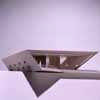
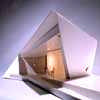
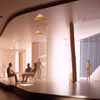
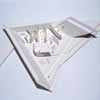
Maggie Centre Fife : images from Zaha Hadid Architects 150802
Maggie’s Fife – Building Context
The proposed site is a unique situation within the hospital grounds. The specific site of the Maggie’s centre is in the northeastern section of a hollow to the southeast of the main entrance.
The hollow has a dramatic topography, which in combination with the overgrown foliage and trees creates a very natural environment in contrast to the rest of the hospital. The border of this area is naturally protected and enhanced by the trees along its edge. The positioning of the Maggie’s Centre in the NE corner makes it clearly visible from the hospital and the car park the centre. As a single storey construction, it is at eye level a continuation of the border that the trees already provide.
An overall objective for the design of Maggie’s Fife was that it is a transition between the two different types of spaces, the natural landscape and the car park / hospital. The intervention of building has been to exploit this location. As it exists now, there is no formal edge to this part of the hollow so various study models were used to explored how an edge could be developed which could transform itself into a building envelope and thus become a gateway to the landscape.
Maggie’s Fife – Volume & Landscape
Externally the submitted design is a play between the form a folding surface and a connecting ground slab. The folding surface articulates a directional emphasis of moving the visitor into a different space from the rest of the hospital grounds. This folded surface is articulated by cladding the visible roof and two opposing walls with the same material, a sheet cladding of corten steel. Making the remaining elevations a mix of translucent and clear glass reinforces the directional nature of this form.
The metal cladding is expressed clearly at the eaves to accentuate the continuity of the cladding from wall to roof. The large overhangs of the roof are used to extend the building into the landscape on both sides. So on the north side it extends to illustrate the entrance doors. On the south side it provides solar shading to the glass elevation and partially cover the terrace.
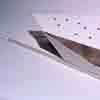
Maggie Centre image supplied by Zaha Hadid Architects 140104
Maggie’s Centre Fife sits on a concrete plinth slab, which connects it to the surrounding areas and landscaped areas. On the north side, the slab outlines the car parking before rising to the same level as the public entrance to Maggie’s Fife. The strong directional language and material contrasts of the slab to the tarmac should mark out clearly the entrance for the new visitor. Lighting will be incorporated to illustrate this at night. The area between the parking and existing trees will be landscaped with new trees planted to extend the area to the parking.
The slab continues along the eastern side separating the centre from the car park with a wall. The rising of the wall on this edge indicates the gradual separation of public space of the entrance to the private spaces of the terrace. It terminates by wrapping around the southern tip of the centre as a south-facing terrace. A concrete wall acts as a balustrade in this area. Where the terrace is in front of the centre a glass balustrade is used. The northern section of the terrace cantilevers off the sloping ground.
Maggie’s Fife Program
Internally the arrangement of rooms is centered on an open plan kitchen. The cellular spaces are located to the north and east elevations. The offices are located on the north elevation with a direct view to the car park and the entrance. The rooms to the east need a more private nature and are as such seen externally as a semi opaque façade.
The entrance to Maggie’s Centre Fife is located at the corner underneath a roof overhang. A direct view exists from the entrance at the northeast through the central space of the kitchen to the south facing glass elevation. The view of a hidden landscape through this space is the intended first impression for the visitor upon entering the Maggie’s Centre.
The internal central space is kept as open and column free as possible. A ramp connects the main space to a lower platform, which a flexi-hall is situated. A system of shutters and sliding doors can seal this space off from the main space.
The southern facing façade is floor to ceiling glazing. There are windows and doors allowing direct access to the outside terrace. The extension of the roof beyond the glazing and terrace give a continuity between the inside / outside spaces.
Throughout the spaces are scattered roof and wall triangular skylights similar to views, light and continuity of form into the space. The interior is intended to look like another fold inside the external fold. To contrast the exterior it will be primarily coloured linoleum. The linoleum will be used on all surfaces such as floor, wall and ceiling.
Maggie’s Fife Catalyst Legacy
It is hoped that the centre is a catalyst for the future development of the hollow as a potential leisure area such as a sculptural park. As such its connection to the lowest level of the hollow may be the added at a later stage from the terrace area.
Maggie’s Centre Fife – text : JH / Zaha Hadid Architects 15 Aug 2002
Zaha Hadid Architects Studio 9, 10 Bowling Green Lane London
+44 (0)20 7253 5147
Zaha Hadid : The Complete Works
Gordana Fontana Giusti, Patrick Schumacher

Zaha Hadid: The Complete Works
Hardcover 448 pages (November 2004) Publisher: Thames and Hudson Ltd ISBN: 0500342008
Zaha Hadid: The Complete Works
Synopsis of Zaha Hadid: The Complete Works
Zaha Hadid is the most famous woman architect in the world, and the first to win the Pritzker Prize. Having achieved international recognition through her striking images and design, the Iraqi-born, London-based architect is now of the profession’s most sought-after figures. Her buildings are now appearing across the globe, from Europe to the United States, in China and Japan. Zaha Hadid’s moment has arrived.
Zaha Hadid: Complete Works is one of the most exciting and complex architectural monographs ever published. This brilliantly conceived and designed publication comprises four volumes of differing sizes that offer multiple perspectives on more than a hundred projects and over twenty years at the vanguard of architecture.
Major and Recent Projects is a large-scale presentation of Hadid’s recently built work and famed paintings, while the thematically organized Projects Documentation identifies the strands of her work through detailed descriptions and illustrations. Models and Sketches is a selection of the architect’s groundbreaking explorations in perspective, many taken from her private sketchbooks, and previously unpublished. Essays and References features essays by international critics, an appreciation by maverick Peter Cook and an exhaustive reference section, including a bibliography and project data.
No larger image
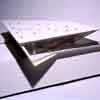
photo © Adrian Welch
Maggies Centre: image from Zaha Hadid Architects 140104
Zaha Hadid Building Designs
Contemporary Zaha Hadid Property Designs – recent architectural selection below:
Maggies Dundee by Frank Gehry
Ordrupgaard Museum, Copenhagen
Recent Zaha Hadid building
Glasgow Transport Museum
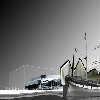
photo © Adrian Welch
Second Scottish Zaha Hadid building : Glasgow Transport Museum
Key Pages
Scottish Capital Building Designs
Scottish Capital Property Designs – recent architectural selection below:
Scottish Parliament
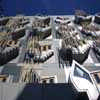
photograph © Adrian Welch
Buildings / photos for the Zaha Hadid Architecture – Maggies Kirkcaldy Building, Fife, eastern Scotland, UK, page welcome
.
Zaha Hadid Architects – Website: www.zaha-hadid.com
